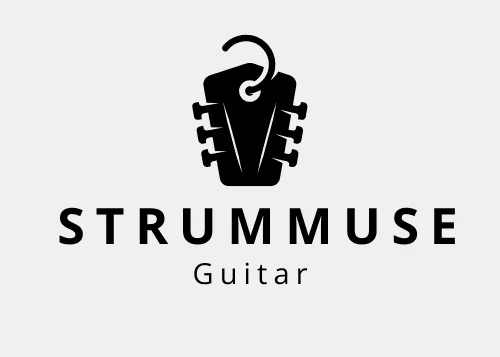Introduction – The Dream of Sounding Like a Full Band
Have you ever wished you could sound like an entire band—with rhythm, melody, and even percussive groove—all by yourself on guitar? That dream is not only possible, it’s also incredibly fulfilling. The One-Man Band Technique is all about combining lead and rhythm guitar into a single, self-sufficient performance.
Think of guitarists like Tommy Emmanuel, John Mayer (especially during his solo sessions), or Tuck Andress—these are players who blur the lines between rhythm, lead, and sometimes even percussion. With the right technique, you can turn your solo playing into a complete musical experience, keeping your audience engaged with rich textures and dynamic shifts.
This guide is your full roadmap to mastering this art. We’ll explore:
- The core elements of rhythm and lead integration
- Fingerstyle, hybrid picking, and rhythmic layering
- Tips for dynamic solo arrangements
- Examples, practice ideas, and more
Ready to level up? Let’s plug in (or stay unplugged) and get started.
What Does Combining Lead and Rhythm Mean?
In traditional bands, the rhythm guitarist handles the chords and groove, while the lead guitarist takes solos or melodic lines. But when you’re playing solo, you need to do both.
Combining lead and rhythm means:
- Playing chord progressions while sneaking in melodic fills
- Using fingerstyle or hybrid picking to articulate bass, harmony, and melody together
- Keeping time with percussive strumming or slap techniques
- Creating arrangements that feel full without additional instruments
It’s a little bit of multitasking, a lot of muscle memory, and a whole lot of musical awareness.
The Three Pillars of the One-Man Band Style
1. Rhythm Foundation
Start with a strong chord progression. Whether it’s open chords or jazz voicings, your rhythm is your anchor.
Example: Am – F – C – G
Practice with:
- Strumming (muted slaps and ghost notes)
- Thumb-driven bass for groove (think James Taylor)
- Alternating root-fifth bass lines
2. Lead Fills & Licks
Between or during rhythm parts, sneak in melodic fills.
Try:
- Hammer-ons and pull-offs within the chord shape
- Connecting scale runs between chords
- Bending or sliding into targeted notes
Example:
Play an Am chord, then hammer-on to add melody on the B string (1st to 3rd fret).
3. Percussive Layering
Make your guitar a drum kit:
- Palm slaps for snare
- Body taps for kick
- Thumb thumps for low accents
- Rasgueado flicks for rhythmic drive
Percussion + rhythm + melody = band in one body.
Techniques You Should Master
Fingerstyle Playing
This is the heart of the One-Man Band. Your thumb becomes the bassist, while your other fingers pluck harmony and melody.
- Thumb: bass (6th, 5th, 4th strings)
- Index/Middle/Ring: melody and chords (1st to 3rd strings)
Start slow. Try simple patterns:
Pattern 1 (Travis Picking):
Thumb – Index – Thumb – Middle
Pattern 2 (Melody Integration):
Thumb – Pluck melody note – Slap – Thumb
Hybrid Picking
Combine pick and fingers:
- Use pick for strumming and low notes
- Use middle and ring fingers for high string melodic fills
This is great for funk, blues, and country fusion styles.
Percussive Strumming
- Use the palm of your strumming hand to hit the strings (like a snare)
- Combine with muted strums and upstrokes
- Add ghost notes and tap the guitar body
Try this groove:D (slap) – x – U – x – D – U (slap) – x – U
Example: Combine It All (Am Groove)
Chord Loop: Am – G – F – E
Pattern:
- Thumb hits bass on 1 and 3
- Index and middle pluck the chord
- Melody notes added between chords
- Slap the strings on 2 and 4
Example melody:
Am G F E
0----3----1----0 (melody on 1st string)
In one measure, you’ve hit bass, played rhythm, accented melody, and kept the beat.
Practice Routine
- Start With a Loop: Pick a simple 4-chord progression.
- Layer Slowly: First play rhythm. Then add melody between chords.
- Tap Along: Introduce slaps or percussive hits.
- Record Yourself: Listen to how “full” your playing sounds.
- Add Transitions: Use slides or melodic licks between chords.
Famous Examples & Artists
- Tommy Emmanuel – Fingerstyle legend, a true one-man orchestra
- Ed Sheeran – Looping master who layers rhythm, lead, and beatboxing
- John Mayer (Acoustic sets) – Smooth chord-melody fusion
- KT Tunstall – Live looping and rhythm layering
Watch their performances—note how they never let the rhythm drop, even while soloing.
Loop Pedal or Not?
A loop pedal can help create the illusion of a full band, but it’s not essential. Your fingers are your loop pedal.
Use a looper to:
- Lay down chord progressions
- Add rhythmic beats (body taps)
- Solo over your own groove
FAQs
Q1: Can beginners try this technique?
Yes, start simple. Use open chords and add one note melodies within the chord shapes.
Q2: Is this only for fingerstyle players?
No. Pick players can use hybrid picking or tapping for similar effects.
Q3: Do I need to be a great soloist?
No. Even simple melodic fills make your playing sound more complete.
Q4: How do I know what melody to add?
Use scale notes around the chord. For Am, use A minor scale (A B C D E F G).
Q5: Can this work for electric guitar?
Absolutely! Blues and funk are perfect genres for rhythm-lead fusion on electric.
Read More on StrumMuse
- Fingerstyle Guitar for Beginners – Build Dexterity and Groove
- Fingerpicking Basics: An Introduction for New Guitarists
- The Ultimate Guide to Learning Guitar Chords, Tabs, and Essentials
External Resources
- Tommy Emmanuel Official Website
- Ultimate Guitar – Fingerstyle Tabs
- Ed Sheeran Live Acoustic Sessions – YouTube
Author’s Note
When I first watched Tommy Emmanuel perform live, I couldn’t believe one person could create such a full, immersive sound. That performance inspired me to break free from just strumming chords and start exploring fingerstyle, melodic phrasing, and percussive grooves. It’s been a game-changer—not just in my sound, but in how I experience music. If you’re ready to be your own band, start slow, build your layers, and enjoy the journey.
StrumMuse – Your trusted companion in learning guitar the fun and easy way.
Related Posts You’ll Love:


I like this site because so much utile material on here : D.